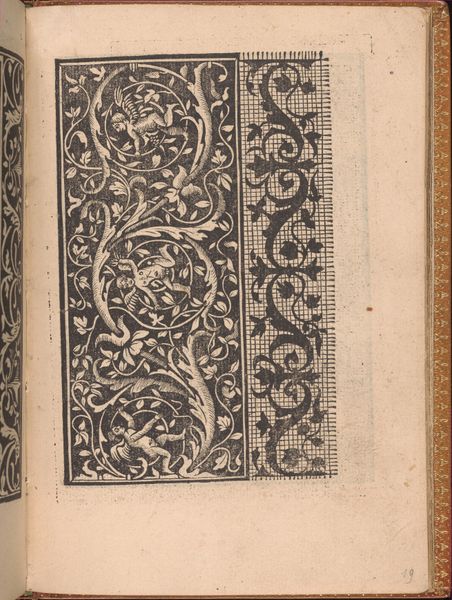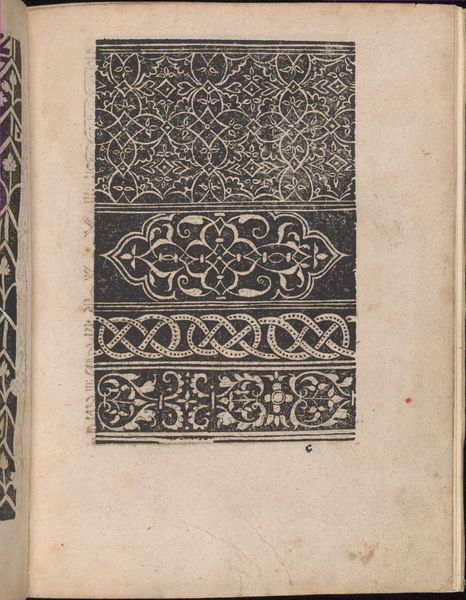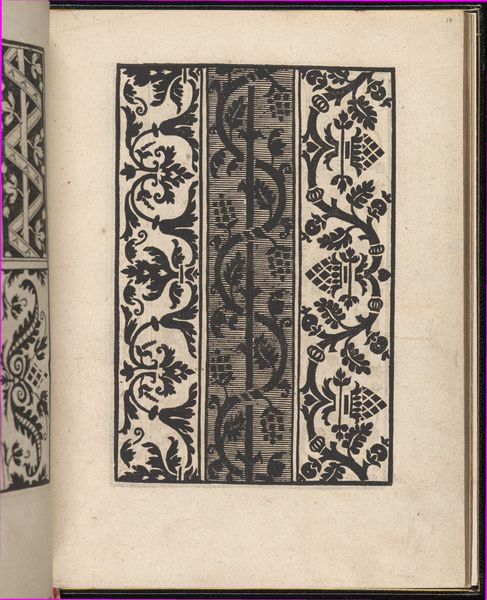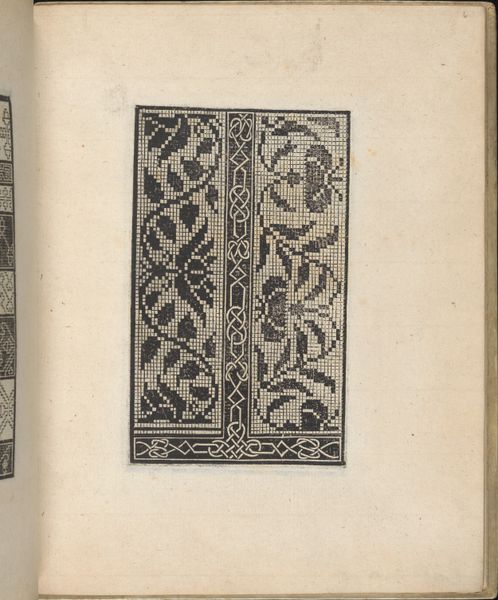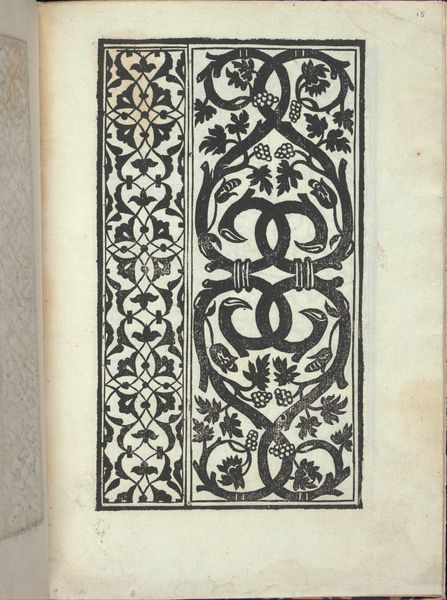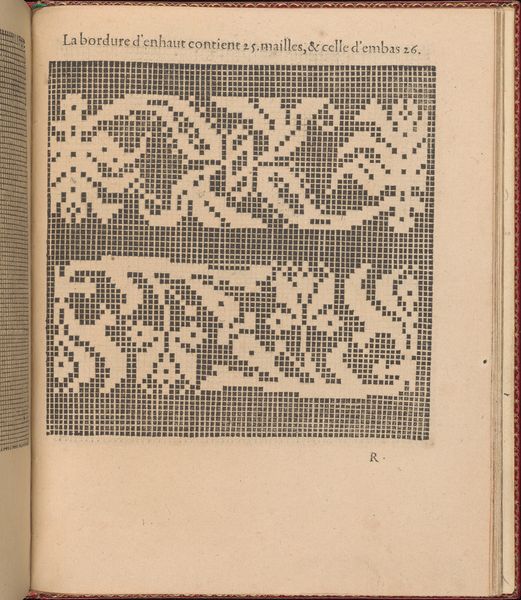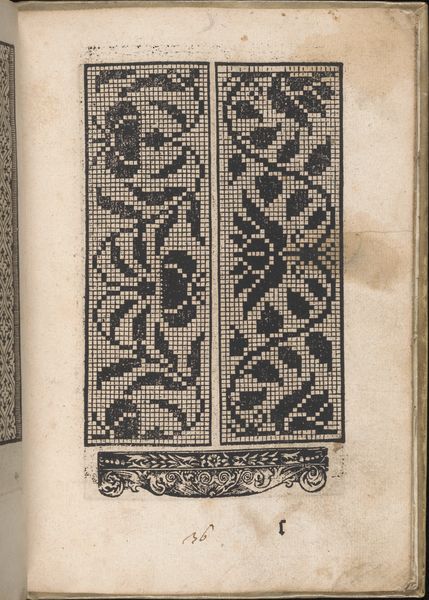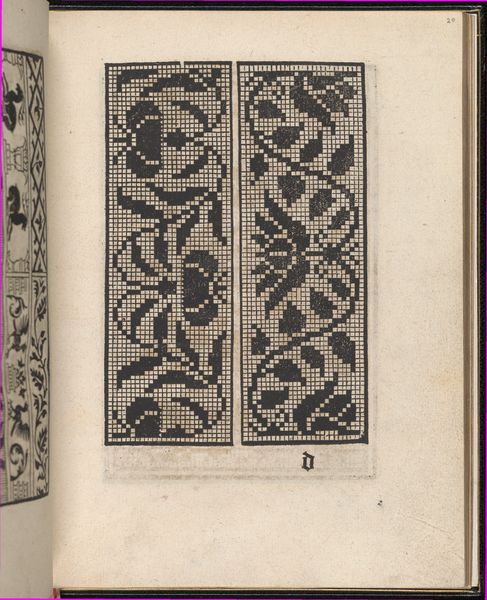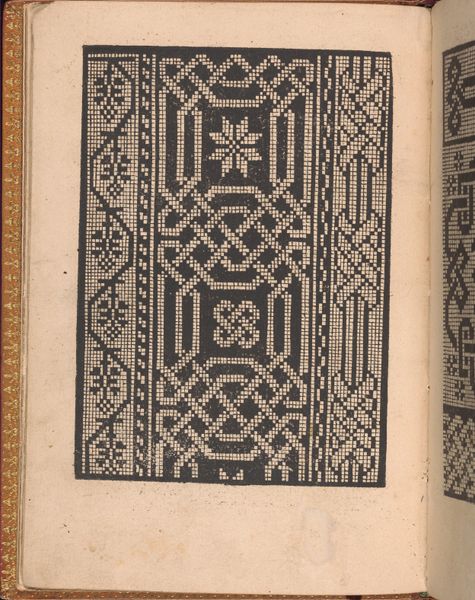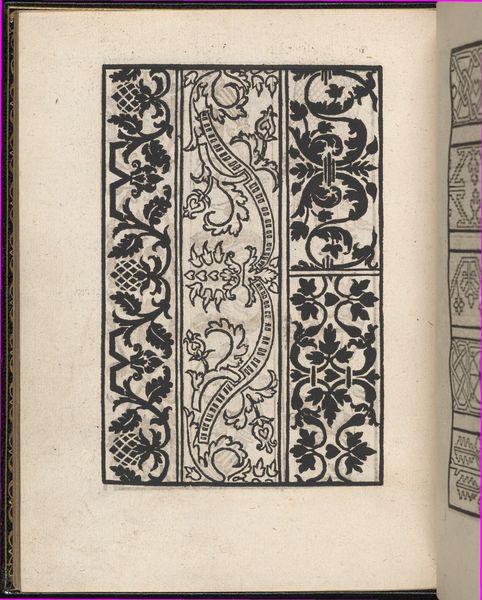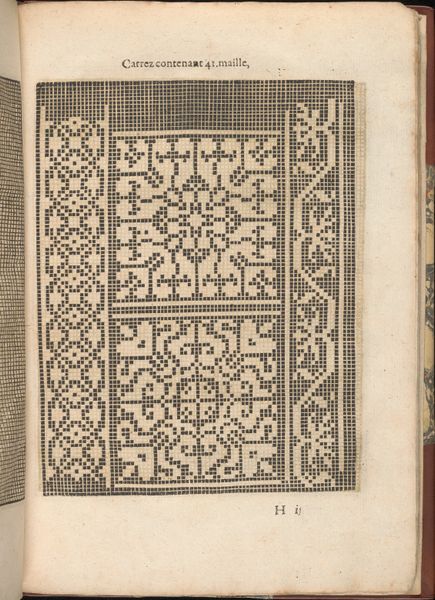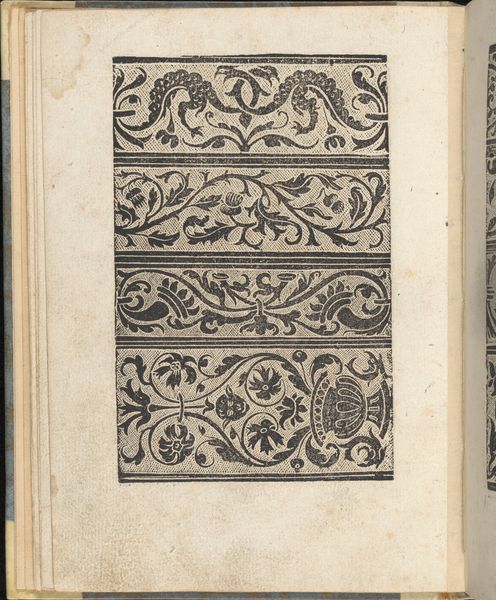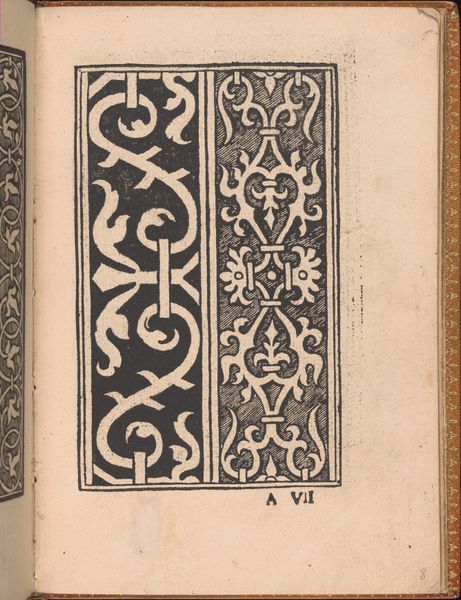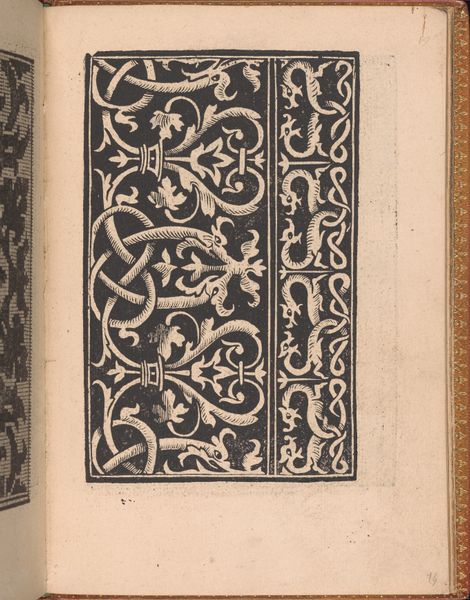
drawing, print, ink, woodblock-print, woodcut, pen, engraving
#
drawing
#
ink drawing
#
pen drawing
# print
#
pen sketch
#
book
#
form
#
ink
#
linocut print
#
woodblock-print
#
geometric
#
woodcut
#
line
#
pen work
#
pen
#
decorative-art
#
italian-renaissance
#
engraving
Dimensions: Overall: 7 7/8 x 5 1/2 in. (20 x 14 cm)
Copyright: Public Domain
Curator: Here we have a page from Nicolò Zoppino’s "Convivio delle Belle Donne," dating back to 1532. It's an example of Italian Renaissance decorative art. What's your immediate impression? Editor: Stark! The high contrast between the black ink and the page jumps out. The pattern on the right almost has an architectural quality; I immediately imagine textiles with similar decoration. Curator: The print, rendered via woodcut or engraving—the debate continues, mind you— offers more than just aesthetic pleasure. "Convivio delle Belle Donne," or "Gathering of Beautiful Women," implies a narrative about the societal role and image of women, framed within the conventions of the Renaissance era. Editor: I'm drawn to the technical process. Considering the time, creating such detailed and repetitive designs demands remarkable craftsmanship and precise control of the materials. The labor involved suggests these books were luxury items, accessible only to a privileged few. Curator: Precisely. And it is within this context that we see not just an image but also a statement about access, power, and the feminine ideal as conceived during the Renaissance. Note the geometric yet organic shapes; it brings in mind the form versus formlessness debate that ran rife at the time. Editor: True. This blend of organic and geometric is intriguing. It reminds me of the tension between the natural resources employed in its making—the woodblock itself, the ink—and the rigid structure of production, the repeatable nature of print. This makes me think of labor disputes as well. Curator: A potent lens. By analyzing art through labor and production we reclaim marginalized voices. These prints prompt a broader conversation on the consumption and dissemination of ideals and how such dynamics permeate gender relations and societal expectations. Editor: Agreed. The materials speak volumes if you’re listening. It challenges art history and situates these works within historical materialism, underscoring themes of class and identity that are often overlooked when solely admiring aesthetics. Curator: A great intervention for today's observer! Reflecting on art through multiple, overlapping viewpoints fosters empathy, reveals the mechanics of meaning-making, and connects this piece from 1532 with contemporary social struggles. Editor: Indeed, by looking closely at these processes and materials, we gain insights that aren’t confined to the era but have resonance for our lives and ongoing debates now. Thank you.
Comments
No comments
Be the first to comment and join the conversation on the ultimate creative platform.
